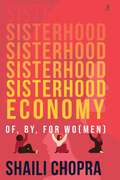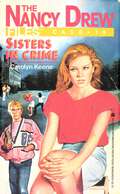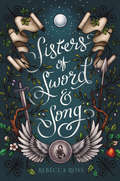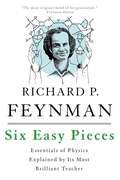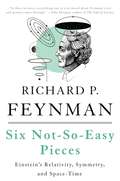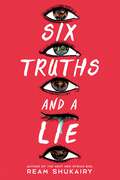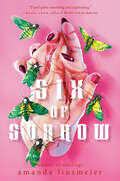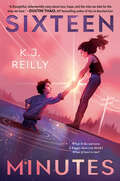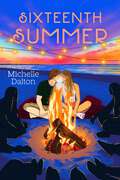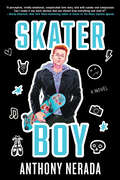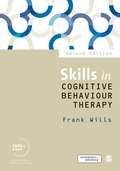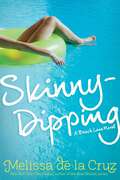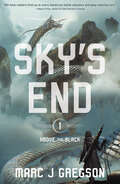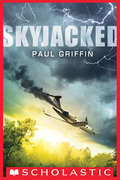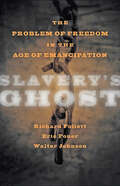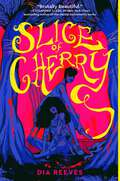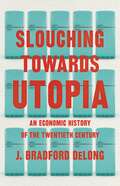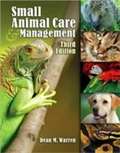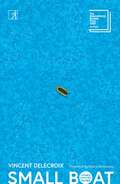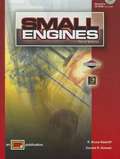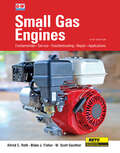- Table View
- List View
Sisterhood Economy: Of, By, For Wo(men)
by Shaili Chopra'Shaili touches upon the most relevant issues of our times which most often are closed door conversations in a highly readable, heroic and engaging way... bringing a powerful, authentic and honest lens to women and the economy.' MASABA GUPTA 'A powerful book with many anecdotes of everyday women encountering and defeating the patriarchy, Sisterhood Economy will fill you with optimism and hope.' FAYE D'SOUZA &‘Shaili Chopra has a chatty and engrossing style of writing ... Mainstreaming of sisterhood is not just about the economy, it is also about the society India desires.&’ BIBEK DEBROY &‘Sisterhood Economy by Shaili Chopra, is important, apt and timely. It brings to you real-life stories of the barriers women face as contributors to the economy... we are the real wealth creators and yet very little recognition of the existing barriers are discussed or resolved.&’ PRIYANKA CHATURVEDI &‘When women rise, they lift up society. Sisterhood Economy is a deeply reflective book that explores and narrates the power of equitable ground for women.&’ FALGUNI NAYAR The new Indian woman is dreaming big and seeking change. Wanting to break from the triptych of bechari, badass or bitch, women are talking of being stronger together. What can a ground-up sisterhood of determined women mean for a country like ours and just how can it unleash and harness the dormant economic potential of half the country&’s population? This book is a power-packed insight into the lives of the women of the world&’s largest democracy who are struggling every single day to get their voice heard, presence felt, and make their economics matter. Shaili Chopra puts a fresh lens to what&’s powering or stopping women to seize the opportunity ahead of them, by talking to more than five hundred different women (and men), across classes, castes, cities, ages, ambitions and desires. Can the mother-in-law trigger change in a country&’s GDP? What are beauty parlour economics? Are women claiming independence and can intimacy drive better economic outcomes? Why are single women rocking it? Sisterhood Economy makes a bold, empathetic, and collective call for women to believe in their transformative abilities and put themselves first. Wrapped in emotional anecdotes and stories, this book is deeply authentic and essential reading for anyone looking to understand women beyond statistics. India could do a lot better if only it treated its women better. How difficult can that be?
Sisters in Crime (Nancy Drew Files #19)
by Carolyn KeeneNancy’s holiday at a California college turns into an investigation of a mysterious drowning, and she discovers that some sorority girls are far from innocent.
Sisters of Sword and Song
by Rebecca RossRebecca Ross, #1 New York Times bestselling author of Divine Rivals, delivers a thrilling new romantasy about a girl who partners with an unlikely ally to save her sister’s life. Perfect for fans of Heartless Hunter, Dance of Thieves, and Warrior of the Wild.After eight years apart, Evadne can’t wait to see her older sister, Halcyon. But, when Halcyon returns from the queen’s army a day early, Eva knows something is terribly wrong. Halcyon is on the run and being chased by her commander after being charged with murder.Though Halcyon’s life is spared, her punishment is heavy— five years hard labor, five years imprisonment, and five years serving the house she has wronged. Suspicious of the circumstances, Eva volunteers to take part of Halcyon’s sentence. She’s sent to serve in the commander’s house, where she meets Damon, a handsome and intriguing mage. Eva must work with Damon on a potentially deadly mission to retrieve a powerful relic that could save the kingdom—and clear her sister’s name. But as the sisters continue to serve each of their sentences, they quickly learn that there are fates worse than death.
Six Easy Pieces: Essentials of Physics Explained by Its Most Brilliant Teacher
by Matthew Sands Robert B. Leighton Richard P. FeynmanThe six easiest chapters from Feynman's landmark work,Lectures on Physics-- specifically designed for the general, non-scientist reader.
Six Not-So-Easy Pieces: Einstein's Relativity, Symmetry, and Space-Time
by Matthew Sands Robert B. Leighton Richard P. FeynmanSix lectures, all regarding the most revolutionary discovery in twentieth-century physics: Einstein's Theory of Relativity. No one--not even Einstein himself--explained these difficult, anti-intuitive concepts more clearly, or with more verve and gusto, than Feynman.
Six Truths and a Lie
by Ream ShukairySix Muslim teens are falsely accused of a deadly attack in this timely and harrowing examination of America&’s justice system, perfect for fans of Angie Thomas and Samira Ahmed. As fireworks pop off at a rowdy Fourth of July bonfire party, an explosion off the California coast levels an oil rig—resulting in chaos and worse, murder. At the center are six Muslim teens - six patriots, six strangers, and six suspects. An old soul caught in the wrong place. An aspiring doctor. An influencer with a reputation to protect. A perfect daughter with secrets to hide. A soccer star headed for Stanford. An immigrant in love. Each with something to hide and everything to lose. Faced with accusations of terrorism, The Six are caught in a political game that will pit them against each other in exchange for exoneration. They must choose: frame each other to guarantee their own independence or expose their secrets to earn back freedom for them all.
Six of Sorrow
by Amanda LinsmeierSixteen years ago, six girls were born on the same day—and now, on their birthday, one of them is missing. From the author of Starlings comes a story about small-towns, friendships, and the terrifying things your parents don't tell you, that's perfect for fans of Yellowjackets.For most of her life, Isabeau and her five best friends were inseparable—amazingly enough, the six girls even shared a birthday. Then a rift caused their friendships to fracture, and Iz lost everyone except Reuel, the only one who didn&’t abandon her.Until now. The night of their sixteenth birthday, Isabeau leaves Reuel sitting on her front porch and heads home—and in the morning, Reuel is missing. She&’s gone for two days, and when she reappears, there&’s something wrong with her. She&’s sick. Really sick. And she doesn&’t remember anything that happened while she was gone.If there&’s any bright side to the situation, it&’s that Reuel&’s peculiar disappearance brings the six girls back together. Their sisterhood feels as strong as it was years ago, but when another one of them disappears, they all agree that they must have more in common than simply their birthday. They all feel it. Something&’s been waiting for them, and that something has come to claim them one by one.Deep in their bones, they know—it&’s just a matter of time until they they&’re all taken. And if they don&’t save themselves, no one will.
Sixteen Minutes
by K.J. Reilly"A thoughtful, otherworldly story about loss, hope, and the risks we take for the ones we love."—Dustin Thao, New York Times bestselling author of You&’ve Reached SamWhen a new girl arrives in town, seemingly from the future, three teens' lives are turned upside down in this speculative YA novel full of love and loss, and the power of the unknown.Seventeen-year-old Nell knows two things for sure—she&’s never going to get out of her rural, dead-end hometown of Clawson, NY and her best friend Stevie B and longtime boyfriend Cole are never going to leave her. That is until Charlotte, a new girl, arrives at their school and their lopsided friend triangle is turned on its axis. While Nell and Stevie B are certain that Charlotte isn&’t who she says she is, Cole is caught fully in her thrall. There are secret calls and meetings between the two, and Nell knows Cole is keeping something big from her. Now, for the first time in their lives, Nell worries she could lose Cole. When Nell and Stevie B finally confront Cole and Charlotte, they learn the impossible—Charlotte is actually from the future, and for life altering reasons none of them could have imagined, she wants Cole to jump to the future with her, leaving Nell behind. It&’s dangerous, it&’s reckless, but Charlotte convinces them that it&’s the only choice they have. The trio&’s future has always seemed set—but with the knowledge that time travel is real, and with a multiverse of futures before them, they now have the option to live lives they could have only dreamed about. The only questions are, who will take the leap and who will be left behind?
Sixteenth Summer (Sixteenth Summer)
by Michelle DaltonThis sweet summer romance about &“the floaty happiness of first love&” (BCCB) between a girl living in a beachside island town and a city boy is perfect for fans of Jenny Han and Morgan Matson.Anna is dreading another tourist-filled summer on Dune Island that follows the same routine: beach, ice cream, friends, repeat. That is, until she locks eyes with Will, the gorgeous and sweet guy visiting from New York. Soon, her summer is filled with flirtatious fun as Anna falls head over heels in love. But with every perfect afternoon, sweet kiss, and walk on the beach, Anna can&’t ignore that the days are quickly growing shorter, and Will has to leave at the end of August. Anna&’s never felt anything like this before, but when forever isn&’t even a possibility, one summer doesn&’t feel worth the promise of her heart breaking…
Skate Life: Re-Imagining White Masculinity
by Emily Chivers Yochim"Intellectually deft and lively to read,Skate Lifeis an important addition to the literature on youth cultures, contemporary masculinity, and the role of media in identity formation. " ---Janice A. Radway, Northwestern University, author of Reading the Romance: Women, Patriarchy, and Popular Literature. "With her elegant research design and sophisticated array of anthropological and media studies approaches, Emily Chivers Yochim has produced one of the best books about race, gender, and class that I have read in the last ten years. In a moment where celebratory studies of youth, youth subcultures, and their relationship to media abound, this book stands as a brilliantly argued analysis of the limitations of youth subcultures and their ambiguous relationship to mainstream commercial culture. " ---Ellen Seiter, University of Southern California. "Yochim has made a valuable contribution to media and cultural studies as well as youth and American studies by conducting this research and by coining the phrase 'corresponding cultures,' which conceptualizes the complex and dynamic processes skateboarders employ to negotiate their identities as part of both mainstream and counter-cultures. " ---JoEllen Fisherkeller, New York University. Skate Life examines how young male skateboarders use skate culture media in the production of their identities. Emily Chivers Yochim offers a comprehensive ethnographic analysis of an Ann Arbor, Michigan, skateboarding community, situating it within a larger historical examination of skateboarding's portrayal in mainstream media and a critique of mainstream, niche, and locally produced media texts (such as, for example,Jackass,Viva La Bam, and Dogtown and Z-Boys). The book uses these elements to argue that adolescent boys can both critique dominant norms of masculinity and maintain the power that white heterosexual masculinity offers. Additionally, Yochim uses these analyses to introduce the notion of "corresponding cultures," conceptualizing the ways in which media audiences both argue with and incorporate mediated images into their own ideas about identity. In a strong combination of anthropological and media studies approaches,Skate Life asks important questions of the literature on youth and provides new ways of assessing how young people create their identities. Emily Chivers Yochim is Assistant Professor in the Department of Communication Arts, Allegheny College.
Skater Boy
by Anthony NeradaIn this YA pop punk debut about queer romance and destroying labels, a teen risks everything to write his own story. Perfect for fans of Sonora Reyes and Adib Khorram.Stonebridge High&’s resident bad boy, Wesley &“Big Mac&” Mackenzie, is failing senior year—thanks to his unchecked anger, rowdy friends, and a tendency to ditch his homework for skateboarding and a secret photography obsession. So when his mom drags him to a production of The Nutcracker, Wes isn&’t interested at all . . . until he sees Tristan Monroe. Mr. Nutcracker himself.Wes knows he shouldn&’t like Tristan; after all, he&’s a ballet dancer, and Wes is as closeted as they come. But when they start spending time together, Wes can&’t seem to get Tristan out of his head. Driven by a new sense of purpose, Wes begins to think that—despite every authority figure telling him otherwise—maybe he can change for the better and graduate on time.As a falling out with his friends becomes inevitable, Wes realizes that being himself means taking a stand—and blowing up the bad-boy reputation he never wanted in the first place.From a debut author to watch, Skater Boy delivers a heart-wrenching, validating, and honest story about what it means to be gay in a world where you don&’t fit in.
Skills in Cognitive Behaviour Therapy
by Frank WillsThis step-by-step guide to the core skills and techniques of the cognitive behaviour approach is suitable for those with little or no prior experience in CBT. The author uses case examples from a variety of settings to illustrate the skills needed at each stage of the therapeutic process, and brings the therapeutic relationship to the foreground to show you how to build and maintain a successful working alliance with your clients. This second edition includes new content on: - the historical foundations of CBT - common presenting issues, such as depression and anxiety - third wave CBT - IAPT - insights from other approaches, relevant to trainees in other modalities with an interest in CBT.
Skinny
by Donna CoonerHopeless. Freak. Elephant. Pitiful. These are the words of Skinny, the vicious voice that lives inside fifteen-year-old Ever Davies's head. Skinny tells Ever all the dark thoughts her classmates have about her. Ever knows she weighs over three hundred pounds, knows she'll probably never be loved, and Skinny makes sure she never forgets it. But there is another voice: Ever's singing voice, which is beautiful but has been silenced by Skinny. Partly in the hopes of trying out for the school musical - and partly to try and save her own life - Ever decides to undergo a risky surgery that may help her lose weight and start over. With the support of her best friend, Ever begins the uphill battle toward change. But demons, she finds, are not so easy to shake, not even as she sheds pounds. Because Skinny is still around. And Ever will have to confront that voice before she can truly find her own. Donna Cooner brings warmth, wit, and startling insight to this unforgettable debut.
Skinny-Dipping (Beach Lane #2)
by Melissa de la CruzMara, Eliza, and Jacqui are back in the Hamptons for another summer of beaches, boys, and—oh, yeah—babysitting in this second book in the Beach Lane series.Back in the Hamptons for another summer, Mara, Eliza and Jacqui have to deal with the fallout of how they spent their winters. Mara dumped Ryan, but now wants him back. Unfortunately, he may have moved on. To Eliza. Eliza is worried about Mara finding out about her recent fling—but also about what Jeremy will think. And Jacqui is eyeing the Perrys’ new au pair, Philippe. Too bad she’s sworn off boys… If the girls want to keep their jobs, they have to get their love lives under control—or they’ll be on the first bus out of the Hamptons.The Beach Lane series is created by Alloy Entertainment, producer of bestselling teen and middle grade series including The Sisterhood of the Traveling Pants, Gossip Girl, The Vampire Diaries, and Pretty Little Liars. Originally published as part of the Au Pairs series.
Sky Legs
by Irini SavvidesEleni moves to a village in the clouds, where the blue mountains and the sky seem to stretch forever but, surprisingly, people's minds don't. She's been hoping that she can make a new start and leave behind the sense of loss and the low self-esteem that she has been struggling with for most of her life. But this is the kind of place where she'll never fit in. And Eleni is definitely different! So when she and her friends come up against small-mindedness, they find a way to fight it and to change attitudes - beginning with their own. Eleni draws unexpected strength from her mother's determination to live triumphantly and realises that even in her bleakest moments, her life has been transformed by various kinds of magic and more than once has been touched by angels.
Sky's End (Above the Black #1)
by Marc J GregsonPlummet into a kill-or-be-killed competition where a scrappy underdog hell-bent on revenge must claw his way to the top in this thrilling YA fantasy debut <p><p> Exiled to live as a Low, sixteen-year-old Conrad refuses to become heir to his murderous uncle. But Meritocracy is a harsh and unforgiving rule on the floating island of Holmstead, and when his ailing mother is killed by monstrous gorgantauns, Conrad cuts a deal to save the only family he has left. To rescue his sister from his uncle's clutches, Conrad must enter the Selection of the Twelve Trades. <p><p> Hunter, the deadliest of all the Trades, gains a fresh recruit with Conrad. Now he must endure vigorous training, manipulative peers, and the Gauntlet—a brutal final test that yields riches and status to whichever skyship crew kills the most gorgantauns. Forced to serve in the lowest of stations and unseen by all, Conrad overhears whispers of rebellion in the dark. Conrad had never known anything existed below the toxic black clouds of the Skylands . . . until now. <p><p> Grab your copy of Book One of the Above the Black trilogy today! This fast-paced series is reminiscent of Attack on Titan and will appeal to fans of Pierce Brown. It's a great pick for those who love action-adventure. <p> <b>New York Times Bestseller</b>
Skyjacked
by Paul GriffinHave a nice flight . . .Cassie, Tim, Emily, Brandon, and Jay are on their way back from a camping trip, flying from Idaho to New York City on Cassie's family's private plane. This might be a usual thing for the others, but for Jay, it's only his second time ever on a plane. And what starts as a normal flight soon veers desperately out of control.One of the regular pilots is sick, so there's a replacement. Cassie has suddenly fallen ill for no reason. And Jay notices the plane is flying west instead of east.As the military works feverishly on the ground to find out what's going on, the friends are trapped thirty-seven thousand feet in the air on a plane that's clearly been hijacked. Only no one knows who's in control or why it's happening. Their only chance to survive is by working together, but when everyone is a suspect, trusting the wrong person is a deadly mistake. With each passing minute, the gas gauge drops, alliances shift, and danger rises. Will anyone make it off Flight 21 alive?
Slavery's Ghost: The Problem of Freedom in the Age of Emancipation (The Marcus Cunliffe Lecture Series)
by Walter Johnson Eric Foner Richard FollettPresident Abraham Lincoln freed millions of slaves in the South in 1863, rescuing them, as history tells us, from a brutal and inhuman existence and making the promise of freedom and equal rights. This is a moment to celebrate and honor, to be sure, but what of the darker, more troubling side of this story? Slavery’s Ghost explores the dire, debilitating, sometimes crushing effects of slavery on race relations in American history. In three conceptually wide-ranging and provocative essays, the authors assess the meaning of freedom for enslaved and free Americans in the decades before and after the Civil War. They ask important and challenging questions: How did slaves and freedpeople respond to the promise and reality of emancipation? How committed were white southerners to the principle of racial subjugation? And in what ways can we best interpret the actions of enslaved and free Americans during slavery and Reconstruction? Collectively, these essays offer fresh approaches to questions of local political power, the determinants of individual choices, and the discourse that shaped and defined the history of black freedom. Written by three prominent historians of the period, Slavery’s Ghost forces readers to think critically about the way we study the past, the depth of racial prejudice, and how African Americans won and lost their freedom in nineteenth-century America.
Slice of Cherry
by Dia ReevesPerfect for fans of Lisa Frankenstein and Bones and All, this &“brutally beautiful&” (Cassandra Clare) coming-of-rage horror novel about girl villains and monstrosity follows two sisters…and their growing body count—now with a brand-new look!Kit and Fancy Cordelle are sisters of the best kind: best friends, confidantes, and accomplices. Daughters of the infamous Bonesaw Killer, Kit and Fancy are used to feeling like outsiders, and that&’s just the way they like it. But in their otherworldly East Texan town, where the weird and wild run rampant, they are hardly the oddest or most dangerous creatures around. Despite their mother&’s efforts to curtail their worst impulses, Kit and Fancy eventually give into their deepest, most secret desire—the desire to kill. What starts as a fascination with slicing open and stitching up quickly spirals into a gratifying murder spree. Of course, the sisters aren&’t killing just anyone—only the people who truly deserve it. But the girls have learned from the mistakes of their father and know that any shred of evidence could get them caught. So when Fancy stumbles upon a gateway into another world, she opens a door to the perfect body disposal…and to endless possibilities.
Slouching Towards Utopia: An Economic History of the Twentieth Century
by J. Bradford DeLongAn instant New York Times and Wall Street Journal bestseller from one of the world&’s leading economists, offering a grand narrative of the century that made us richer than ever, but left us unsatisfied &“A magisterial history.&”—Paul Krugman Named a Best Book of 2022 by Financial Times * Economist * Fast Company Before 1870, humanity lived in dire poverty, with a slow crawl of invention offset by a growing population. Then came a great shift: invention sprinted forward, doubling our technological capabilities each generation and utterly transforming the economy again and again. Our ancestors would have presumed we would have used such powers to build utopia. But it was not so. When 1870–2010 ended, the world instead saw global warming; economic depression, uncertainty, and inequality; and broad rejection of the status quo. Economist Brad DeLong&’s Slouching Towards Utopia tells the story of how this unprecedented explosion of material wealth occurred, how it transformed the globe, and why it failed to deliver us to utopia. Of remarkable breadth and ambition, it reveals the last century to have been less a march of progress than a slouch in the right direction.
Small Animal Care and Management
by Dean M. WarrenSmall Animal Care and Management, 3rd Edition is a comprehensive text that provides the skills and knowledge needed for students interested in working with small animals like dogs, mice, ferrets, fish and reptiles among others. This highly researched text covers numerous species, which as detailed by scientific names, as well as the history and the domestication of animals including information on safety, nutrition, and careers. Small Animal Care and Management is flexible enough to be used by the general reader interested in small animals, as well as students studying the field. The index allows the reader to find subject areas and topics quickly. The text also encourages students to further research and explore subject areas of interest utilizing resources such as Internet sites and a detailed glossary.
Small Boat
by Vincent DelecroixNovember 2021: an inflatable dinghy carrying migrants from France to the UK capsizes in the Channel, causing the deaths of 27 people on board. How and why did it happen? Despite receiving numerous calls for help, the French authorities wrongly told the migrants they were in British waters and had to call the British authorities for help. By the time rescue vessels arrived on the scene, all but two of the migrants had died. The narrator of Delecroix&’s fictional account of the events is the woman who took the calls. Accused of failing in her duty, she refuses to be held more responsible than others for this disaster. Why should she be more responsible than the sea, than the war, than the crises behind these tragedies? A shocking, moral tale of our times, Small Boat reminds us of the power of fiction to illuminate our darkest crimes.
Small Gas Engines
by Alfred C. Roth W. Scott Gauthier Blake J. FisherThe Small Gas Engines textbook covers all areas of engine theory and service. The book includes extensive information on L-head, overhead valve, and overhead cam engine designs. The troubleshooting and engine service information in the book is generalized rather than manufacturer-specific so that it can be applied to a wide range of engine designs from different manufacturers. The book contains all of the service procedures needed to completely rebuild a small, single-cylinder gas engine. The theory sections of the book give the reader a sound understanding of the science involved in four-stroke and two-stroke internal combustion cycles in easy-to-understand language. They also provide the reader with clear explanations of the role of basic engine components, the benefits and operation of various engine designs, and up-to-date emission control information. Review questions at the end of each chapter reinforce the important information presented in that chapter. The suggested activities at the end of each chapter are hands on and research activities that help the students apply what they have learned in the text and expand their knowledge.
Small Gas Engines: Fundamentals, Service, Troubleshooting, Repair, Applications
by Alfred C. Roth W. Scott Gauthier Blake J. FisherSmall Gas Engines, a recommended textbook by the Equipment & Engine Training Council (EETC), is a student-focused approach to learning that starts with the basics—safety, tools, fasteners, and electrical fundamentals—and progresses logically through the design, operation, troubleshooting, and repair of small engines. It applies to a wide range of engine designs from different manufacturers and covers all areas of engine theory and service, with extensive information on L-head, overhead valve, and overhead cam engine designs. The book provides a sound understanding of the science involved in four-stroke and two-stroke internal combustion cycles and clear explanations of the role of basic engine components, the benefits and operation of various engine designs, and up-to-date emission control information. The Applications Unit includes information about a wide range of small engine applications, such as lawn equipment, lawn tractors, snow throwers, and more.
